Updated: Nvidia GeForce GTX 1070 8GB Pascal Review
Ashes of the Singularity, Battlefield 4 And GTA V Results
Ashes of the Singularity
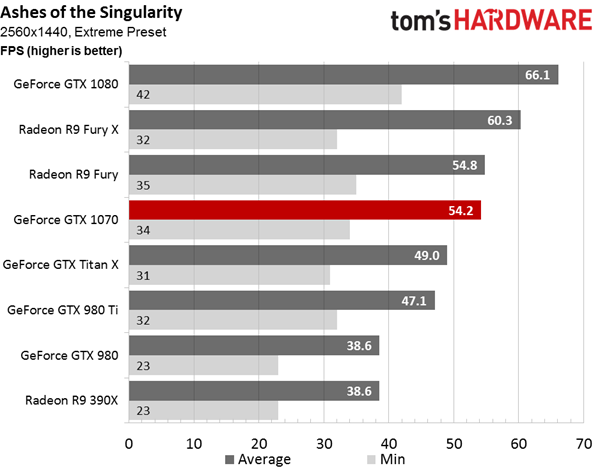
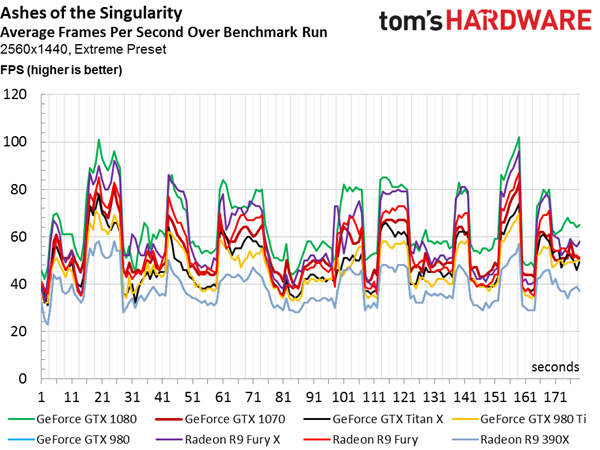
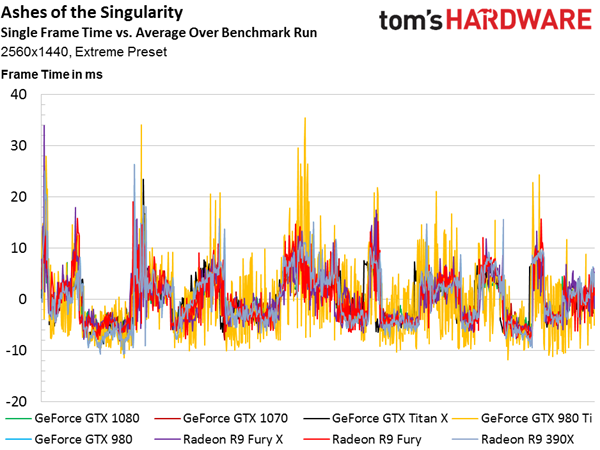
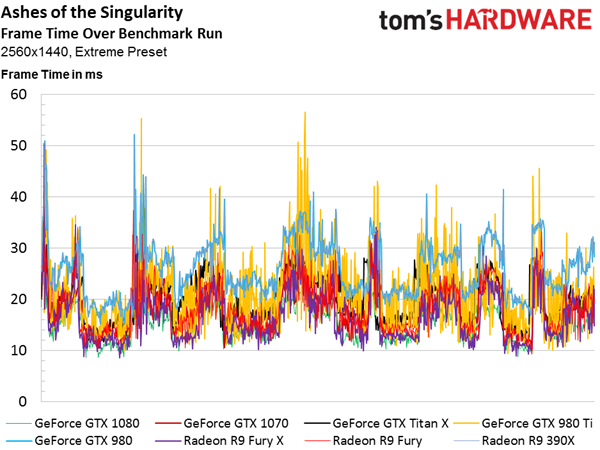
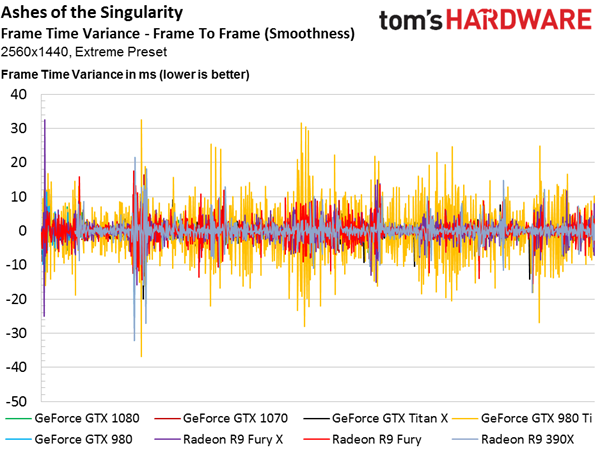
In our analysis of the GeForce GTX 1080, we commented on the flagship’s ability to overtake AMD’s Fiji-based boards, both of which excel in Ashes. The GeForce GTX 1070 does not enjoy the same distinction. Although it’s faster than the $1000+ GeForce GTX Titan X, it slides in just behind the Radeon R9 Fury at 2560x1440.
Before we all start ripping on the GP104-based board, though, remember that the Founders Edition card is expected to sell for $449, while the Radeon that nudges past it goes for $520 on Newegg (on 5/24/16). And Ashes is perhaps a best-case for AMD. Almost certainly we’ll be seeing price drops on Fiji-based hardware to correspond.
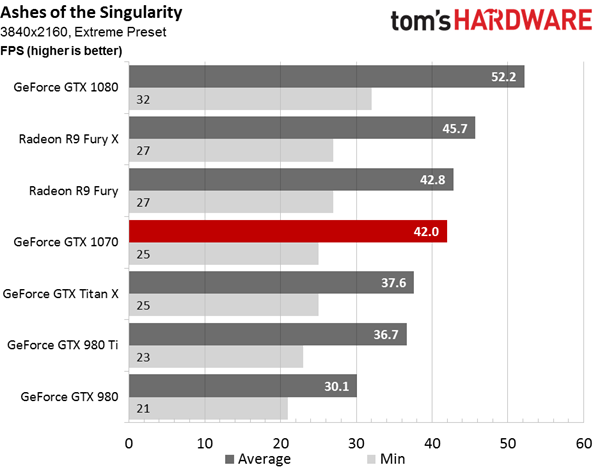
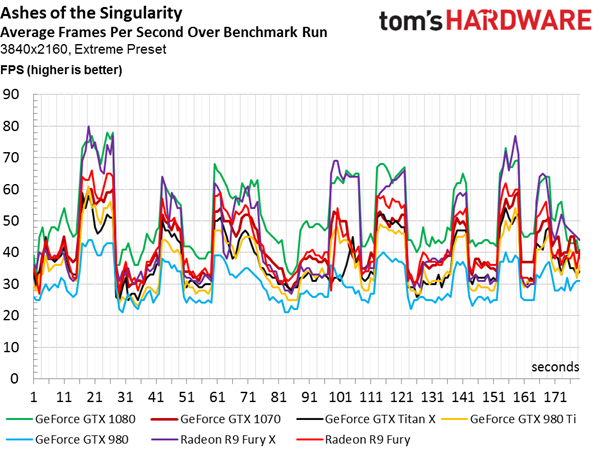
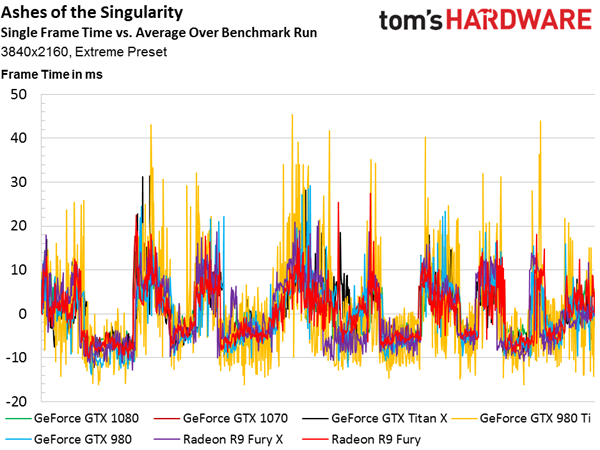
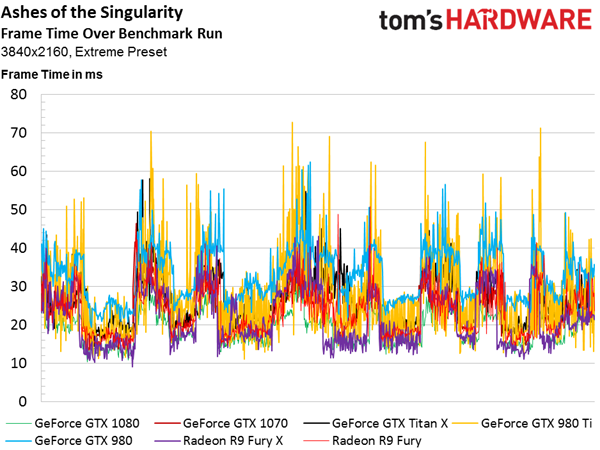
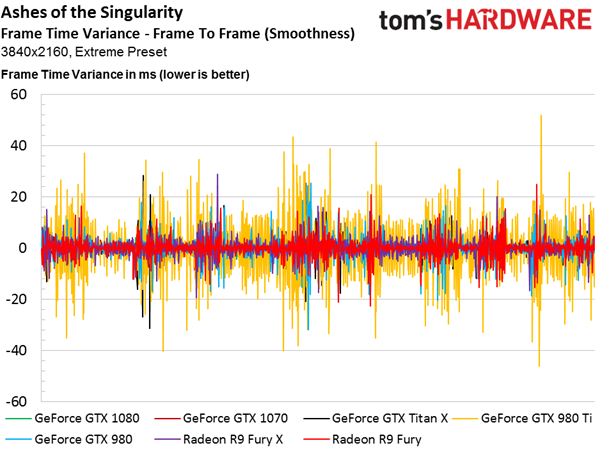
Stepping up to 4K doesn’t change the finishing order; it simply shifts all of the benchmark results down significantly. The GeForce GTX 1070 still trails both Fiji-based boards, but it’s only just behind the vanilla Fury that sells for $70 more at the time of writing.
We can’t help but be impressed by how the Fury X holds up to the GeForce GTX 1080 at a price point almost $100 below Nvidia’s new flagship. Then again, we saw the rest of the story play out earlier in the month, and we know most games don’t acquiesce to GCN quite like this one.
Battlefield 4
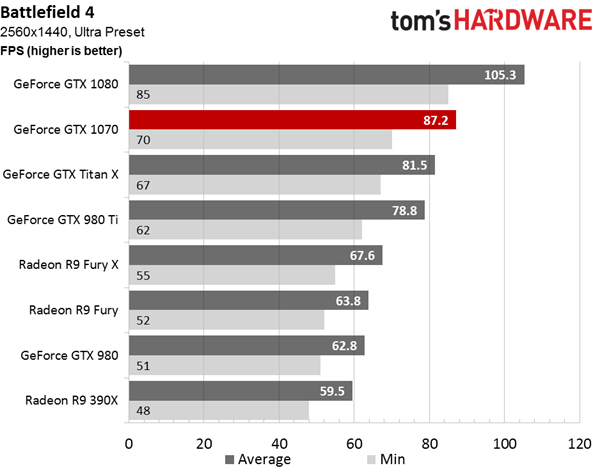
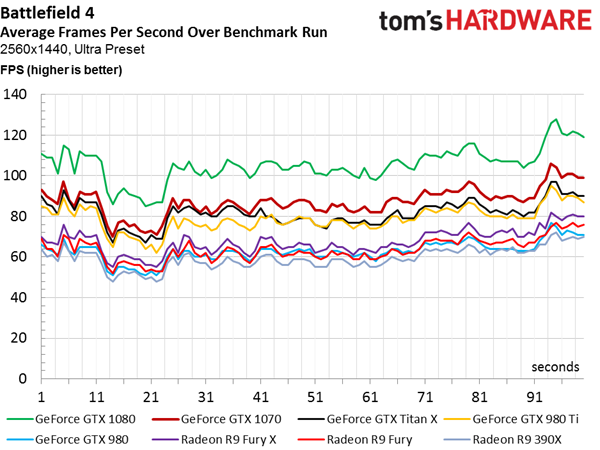
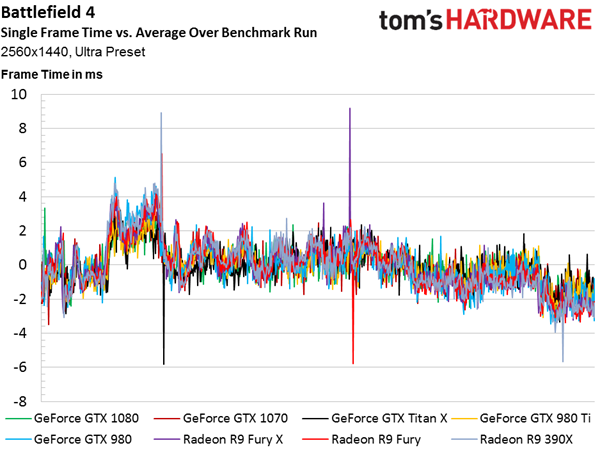
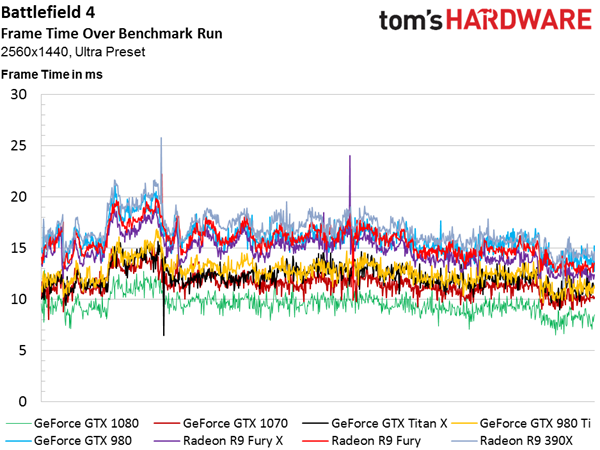
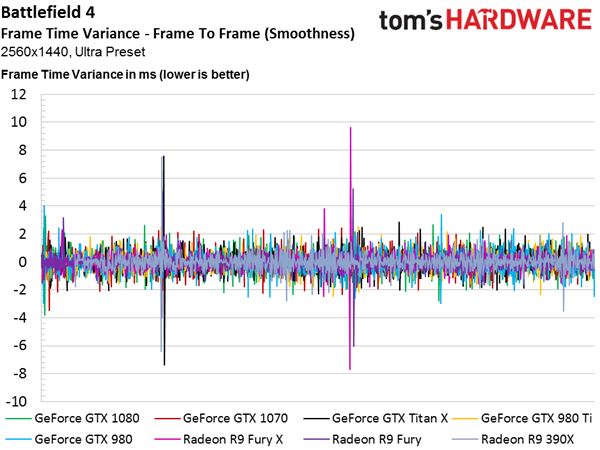
Case in point, the GeForce GTX 1070 follows the 1080 in Battlefield 4 at 2560x1440 for a second-place finish. The GeForce GTX Titan X takes third and the 980 Ti lands in fourth. AMD’s hardware doesn’t show up until we get to fifth place. Despite tight frame time groupings delivered by all of these cards, perhaps best illustrated by frame-to-frame variance, charting frame rate over time shows how they’re all clearly separated into distinct performance tiers.
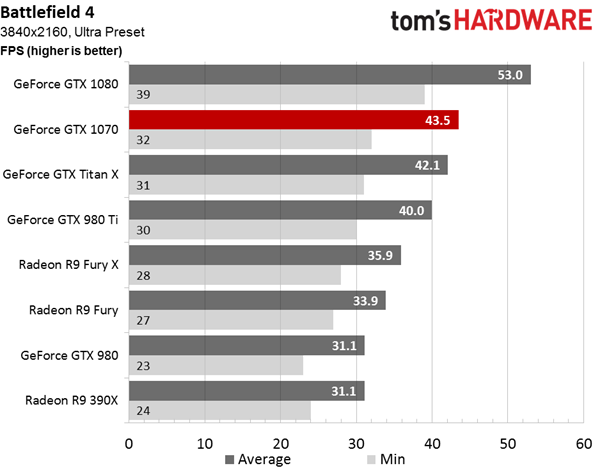
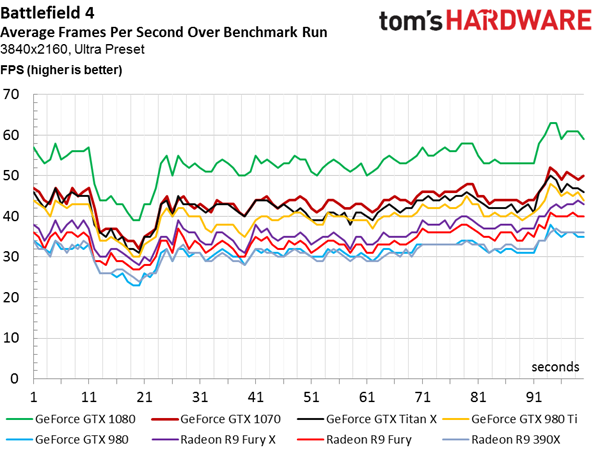
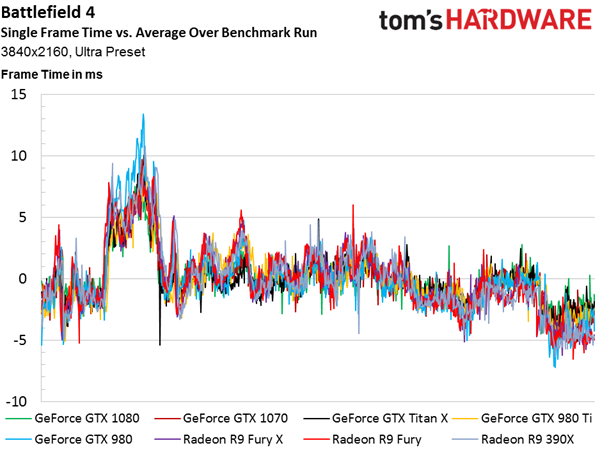
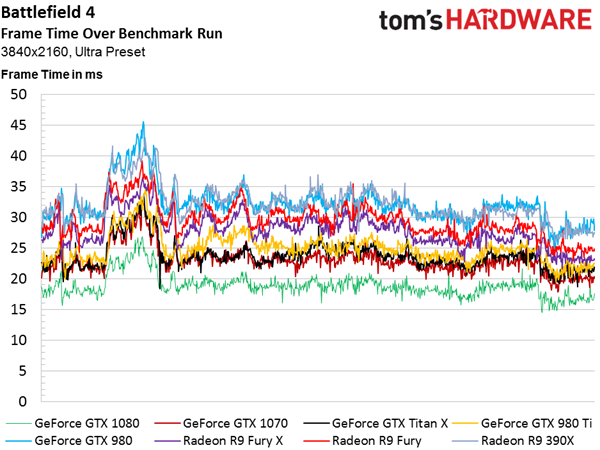
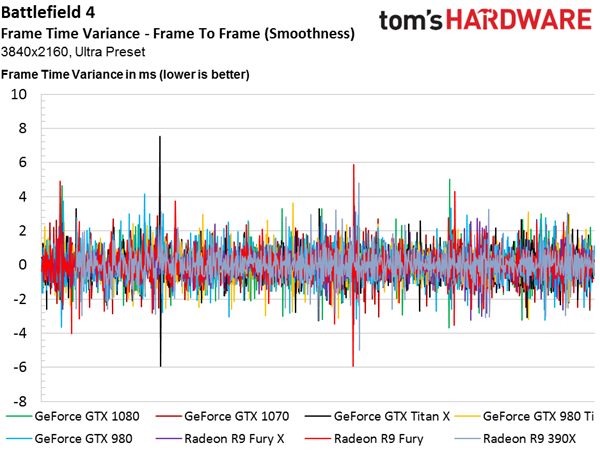
The same situation unfolds at 3840x2160. Despite its age, Battlefield 4 exacts a tolls on these high-end cards. So much so, in fact, that we’re not as comfortable calling the GeForce GTX 1070 a single-GPU solution for 4K with details maxed out. QHD is low-hanging fruit for this card. We’d even say 1080x1200 at 90Hz should be doable most of the time (of course, that’s before factoring in a ~1.4x render target). But the demands of 3840x2160 with quality cranked up are a bit much to expect a steady 60 FPS (that’s almost 500 million shaded pixels per second).
Grand Theft Auto V
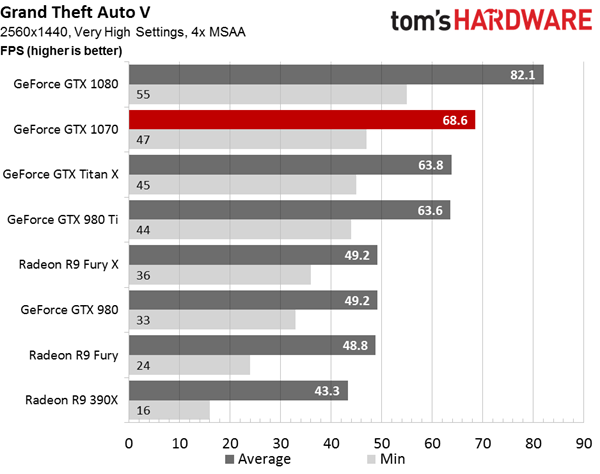
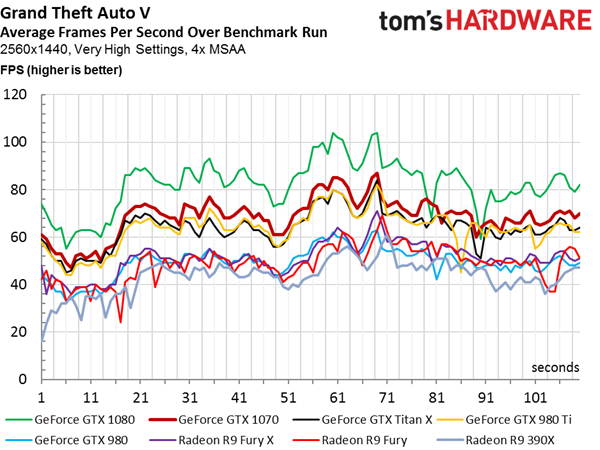
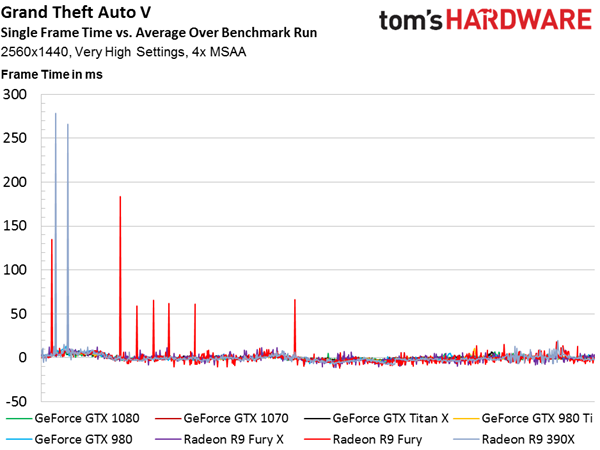
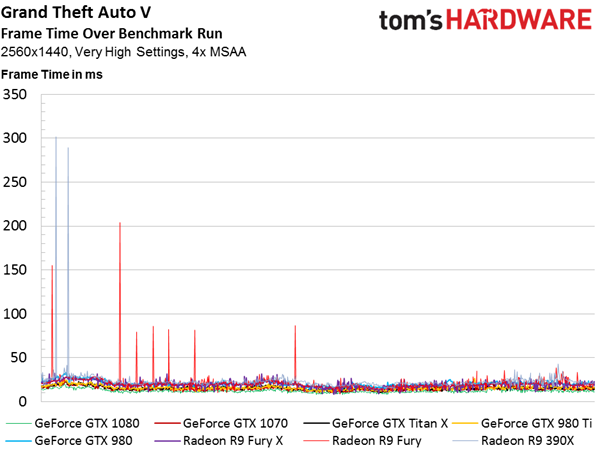
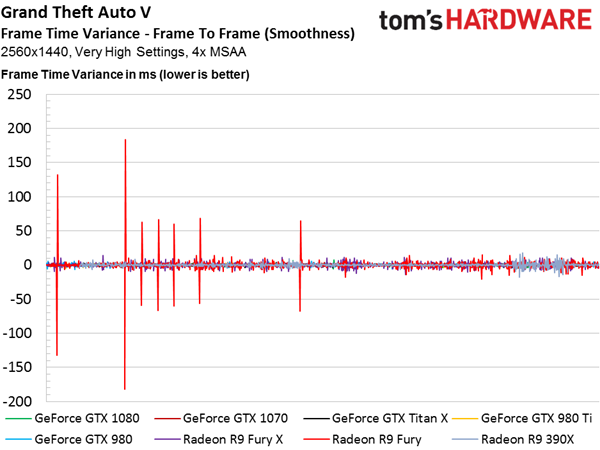
Nvidia’s GeForce GTX 1070 again proves its mettle against the previous-gen GeForce GTX Titan X for less than half the cost. In the process, it secures a second-place finish after the superior GeForce GTX 1080. AMD’s fastest gaming card shows up in fifth place (the 1070 is almost 40% faster).
Get Tom's Hardware's best news and in-depth reviews, straight to your inbox.
The following observation from our GTX 1080 review still bears mention: “Interestingly, the Radeon R9 Fury and 390X—both from AMD add-in board partners—demonstrate sharp frame time spikes that show up as hitching during playback. The reference Radeon R9 Fury X doesn’t exhibit the same behavior.”
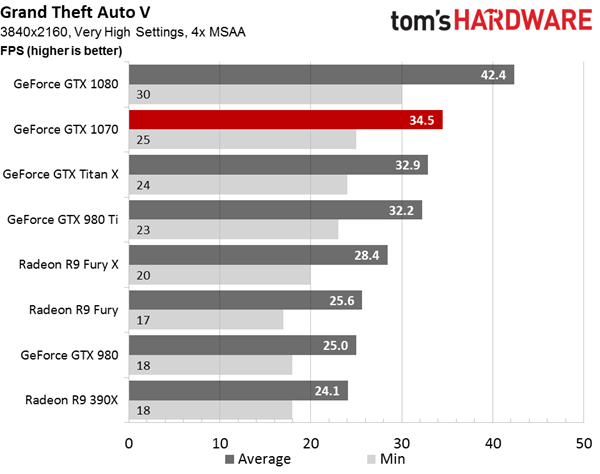
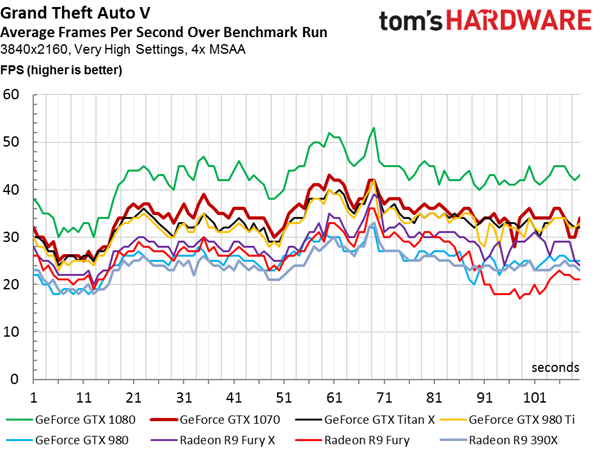
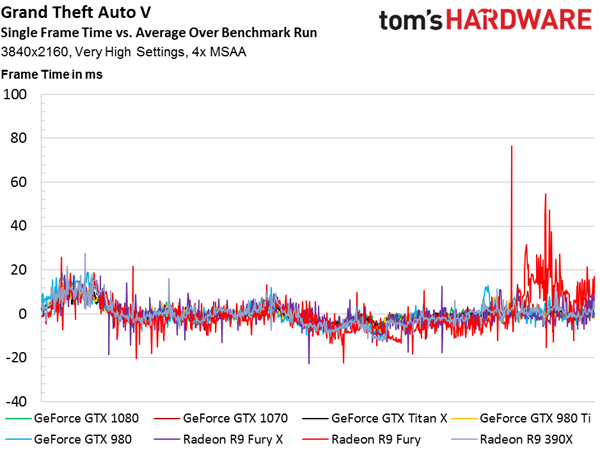
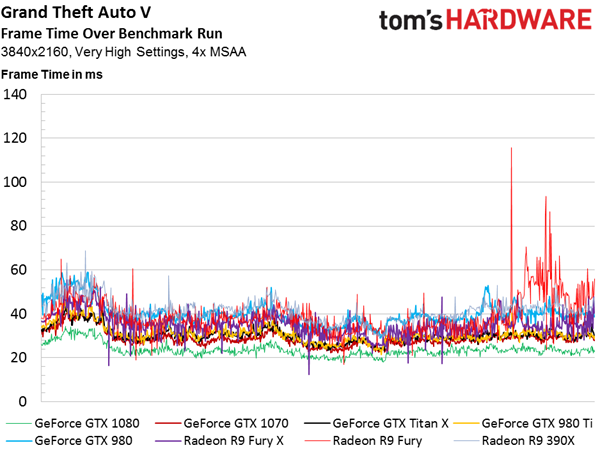
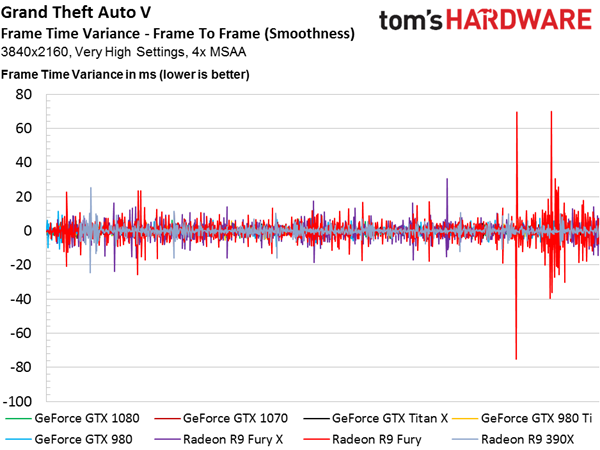
Ultra HD nearly cuts performance in half. In the case of GeForce GTX 1080, you still get mostly-playable frame rates. But the 1070 dips under 30 FPS in a few different places. You’d want to dial back the game’s very granular settings to find the best compromise between speed and fidelity.
Meanwhile, the frame-to-frame variance chart shows all three AMD cards experiencing different degrees of stuttering, with the R9 Fury faring worst.
MORE: Best Graphics Cards
MORE: All Graphics Content
Current page: Ashes of the Singularity, Battlefield 4 And GTA V Results
Prev Page How We Tested GeForce GTX 1070 Next Page Hitman, CARS And Rise of the Tomb Raider Results-
adamovera Archived comments are found here: http://www.tomshardware.com/forum/id-3073584/nvidia-geforce-gtx-1070-8gb-pascal-performance-review.htmlReply -
nitrium So given the simultaneously lower price and higher performance of the partner boards, only an actual idiot would buy the "Founder's Edition" GTX 1070?Reply -
George Phillips I feel that I should regret getting MSI 1070 FE. MSI's custom designs perform superior then FE cards in every way. Very impressive. Asus and Gigabyte's custom designs must also do better than FE cards.Reply -
Krushe When you're talking about the heat on FE cards. I think the default fan speed is 45-50% at 83c. Make it 80% and the card never reaches 70c even with boost clock up to 1900+. What speeds are the MSI fans running at during your temp measurements?Reply -
DookieDraws Edit: The article has been updated, so I deleted my original comment about the MSI GPU.Reply -
Tony Casagrande "This means that the lowest possible GPU Boost clock rate step gets eliminated from the bottom of the BIOS’ table. So, if you want an additional space at the top, you need to make room for it by getting rid of the very bottom one."Reply
If it were me, I would have removed a low to middle clock rate instead of the very lowest to get both the low idle power consumption and the OC speed. -
neblogai Regarding the possible audible noise because of power spikes on PEG: it is not really about cheap MB, but about using analog audio out of MB, and not anything digital, right?Reply
Also, about overclocking: I think reviews of all these new generation nVidia and AMD cards should include average clock that cards operated when doing all game benchmarks. Official boost clock numbers are a bit useless, because AMD cards run games at below boost clocks, and average for nVidia GTX1070 is above boost clocks. Having just official boost clock numbers make it difficult to evaluate overclocking potential and make real gains look much bigger or smaller than expected. -
Calculatron Am I the only one that noticed that the Founder's Edition cards managed to pull over 75 watts from the motherboard PCIe slot and that no one went bonkers over it?Reply
